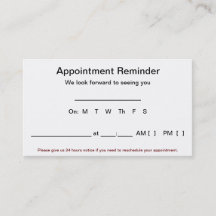However, physician practices rarely go far enough in monitoring their physicians’ outside activities and taking the steps necessary to protect the practice from possible liability, including conflicts of interest that may implicate federal law.
Recently, I worked with a client that permitted its physician-employees to engage in outside activities as long as they “disclosed” such activities to the employer. One physician, who rendered research activities through a separate entity he owned, ended up being subpoenaed in a government investigation. Unfortunately, the practice was also drawn into the investigation and the physician’s counsel was able to make a claim on the practice’s directors and officers liability insurance policy for such outside activities.
For many practices, the above scenario is a real possibility. Physician practices must take the time to evaluate their policies related to “outside activities."
The following are some ideas to consider:
1. Every employment agreement should restrict a physician from engaging in any outside activities without written approval by the employer. Although many physicians (and their counsel) find this unfair, there are many reasons why this is reasonable to require. Simple “notice” of the outside activity is insufficient to protect the practice in most cases and may be deemed to automatically suggest the activity was approved/consented to by the practice, thus implicating the practice’s insurance coverage.
2. The practice should have every physician complete a questionnaire concerning outside affiliations and organizations, at least annually. The practice should work with counsel, taking into account the practice’s specialty, to develop the appropriate questions to include. For example, the questionnaire should inquire whether each physician (or an immediate family member) owns, holds a position with, and receives any payments, royalties or other amounts from an outside healthcare entity unaffiliated with the practice. It is also important to know whether such entity does business directly or indirectly with the practice, particularly as it may relate to pharmaceutical, device and similar companies.
The physician should be required to advise the practice of any changes within 30 days and failure to comply, and/or falsification of responses, should be possible grounds for termination. The information collected from the questionnaire should be closely reviewed by the practice, with counsel as appropriate, to assure that there are no potential legal issues to be addressed (such as Stark self-referrals, Anti-Kickback, Sunshine Act, etc.).
3. Every practice should have a policy advising on the practice’s stance regarding outside activities. For example, the policy might set forth the following: the process for obtaining consent to outside activities; how payments are handled’ the amount/type of insurance required for the outside activity; events that require notice to the practice (i.e. investigation); clarification on intellectual property ownership; a requirement that the practice be indemnified in writing by the physician (and outside entity) related to such outside activity; and a requirement that the physician provide any written agreement with the outside entity for the practice to review.
4. In many cases, practices mandate, as a condition of approval, that the agreement for the outside services incorporate the practice’s own “Terms and Conditions,” as an exhibit. This exhibit then incorporates into the third-party agreement the practice’s desired terms related to indemnification language, intellectual property rights, insurance, control over the physician, etc. I have found this to be an effective approach to protect my clients, but it must be properly done to be sure the practice’s document controls.
5. Make sure the practice has adequate insurance coverage and determine what type of language might be required to minimize risk of a claim being successfully brought for a physician’s outside services. Determine whether each outside activity needs to be specifically excluded from the policy.
Because every practice is different, it is important to evaluate its specific needs and concerns when developing appropriate policies on outside activities. Any time and legal expense required to develop such practice documents are likely to be far less than the possible consequences of failing to so.
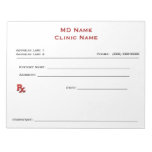

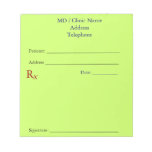
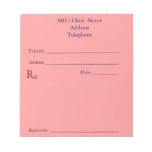
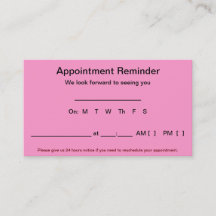
 Appointment Reminder Cards (100 pack-Light Pink)
Appointment Reminder Cards (100 pack-Light Pink)
